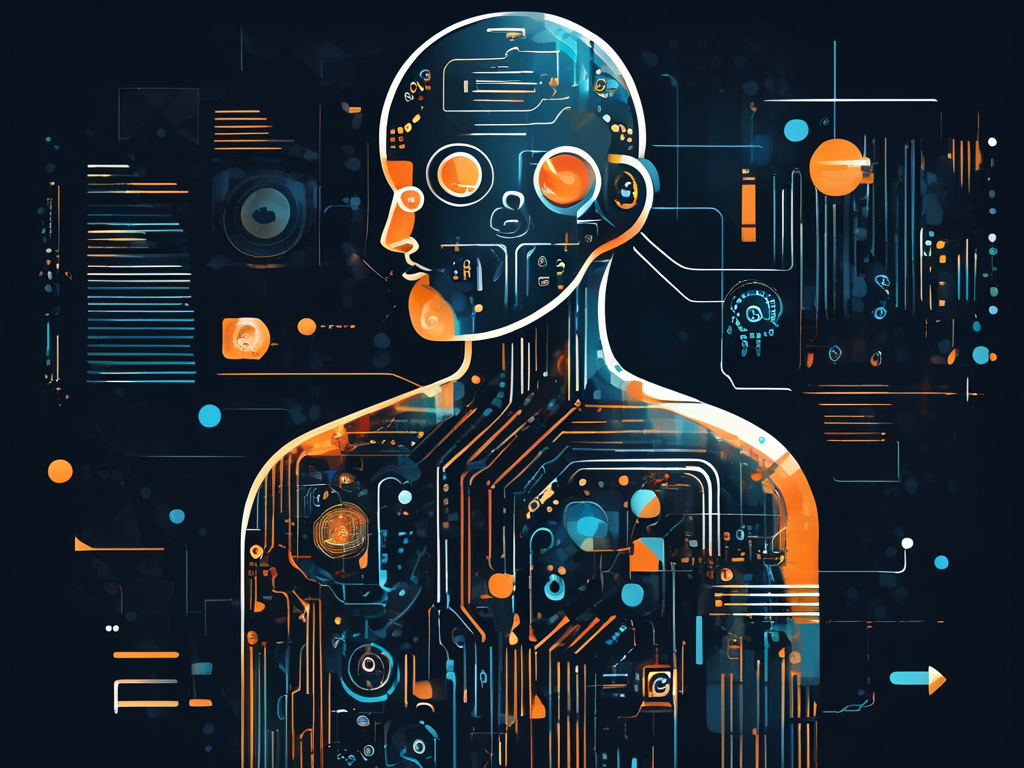In an era where software development moves at lightning speed, AI-driven optimization of software testing is not just an advantage; it’s a necessity. Imagine releasing a high-quality product without the dread of regression bugs or the bottleneck of manual testing. This isn’t a pipe dream—it’s the reality AI brings to the table. By automating test case generation, conducting AI-driven test execution, and enhancing bug detection through sophisticated AI-powered analysis, developers and testers are redefining what it means to achieve speed and efficiency in software delivery.
The integration of AI into software testing goes beyond traditional methods, making way for more adaptive, intelligent, and predictive approaches. It’s the difference between night and day when it comes to maximizing the effectivity of continuous integration and delivery pipelines. As we look towards the future, we find AI firmly at the helm, steering the course towards a landscape filled with predictive analytics and advanced foresight. In this evolving scenario, AI isn’t just a tool—it’s the architect of a new era in software testing.
The goal of this article is to delve deep into these transformative elements, exploring how they contribute to the sophistication of modern software testing. We will dissect the role of AI in creating robust, efficient testing environments and predict how it will continue to revolutionize this space. So, let us embark on this journey of discovery, where we untangle the complex web of AI in software testing—one innovative layer at a time.
Exploring the Role of AI in Automating Test Case Generation

Understanding Automated Test Case Generation
Automated test case generation is a critical aspect of modern software development, significantly contributing to the efficiency and reliability of testing processes. By leveraging Artificial Intelligence (AI), developers can automatically create test cases, which are essential for validating the functionality and performance of software applications. This automation not only saves valuable time but also ensures thorough testing by eliminating human errors. AI algorithms analyze the application’s behavior, identifying potential test scenarios that might be overlooked during manual testing. As a result, teams can guarantee that their software meets all requirements and functions correctly under various conditions. This approach enhances the overall quality of the product and accelerates the delivery process, making it a vital component of software development and testing strategies.
AI-Driven Optimization of Test Coverage and Efficiency
The advent of AI in test case generation has revolutionized how test coverage and efficiency are approached. Traditional methods often involve repetitive tasks that can be both time-consuming and prone to mistakes. However, AI can intelligently identify areas with insufficient test coverage and generate additional test cases to fill these gaps. By doing so, AI ensures comprehensive examination of the software, leading to early detection of bugs and issues. Furthermore, AI’s capability to learn from previous testing cycles enables it to optimize test cases continuously, enhancing testing efficiency over time. This means that not only does AI reduce the manual labor involved in writing and maintaining test cases, but it also improves the quality of testing by adapting and evolving, ensuring that software is robust against an ever-changing backdrop of potential flaws. Consequently, AI-driven automation in test case generation is increasingly recognized as a key factor in maintaining high standards of software reliability and performance, making it an indispensable tool for developers aiming to achieve excellence in software testing.
AI-Driven Test Execution: Speed and Efficiency Redefined
Enhancing Test Execution Speed with AI
The integration of Artificial Intelligence (AI) into test execution processes marks a significant leap towards achieving unprecedented speed and accuracy in software testing. Unlike traditional manual testing methods, which are labor-intensive and time-consuming, AI-driven test execution automates the evaluation of complex software systems, drastically reducing time-to-market. This automation is made possible by AI’s ability to quickly analyze vast amounts of data, simulate user actions, and identify potential issues in real-time. Furthermore, AI enhances test execution by parallelizing tests, running multiple scenarios simultaneously, and significantly cutting down the overall testing duration. This rapid assessment capability ensures that developers receive immediate feedback on their code, facilitating quicker adjustments and improvements. By leveraging AI, companies can not only expedite their development cycles but also improve the reliability and performance of their software products, ultimately leading to a better end-user experience.
Revolutionizing Testing Efficiency through AI Optimization
AI’s contribution to the efficiency of test execution cannot be overstated. Through Smart algorithms and machine learning techniques, AI systems continually refine their testing strategies based on historical data and past test results, thereby optimizing the test execution process. This intelligent analysis helps in identifying patterns and predicting potential points of failure, allowing for focused and effective testing efforts. Moreover, AI-driven testing tools are equipped to handle a variety of testing scenarios, including stress, load, and performance testing, with minimal human intervention. This versatility ensures thorough coverage and assessment of the software under test, enhancing the quality assurance process. Additionally, AI minimizes the redundancy in testing efforts by identifying and eliminating unnecessary or duplicate tests, thereby saving valuable resources and effort. Consequently, the adoption of AI in test execution not only elevates the efficiency and accuracy of the testing process but also contributes to the broader goals of cost reduction and resource optimization in software development projects.
Enhancing Accuracy with AI-Powered Bug Detection and Analysis

Revolutionizing Bug Detection with AI
The advent of Artificial Intelligence (AI) in the realm of bug detection has markedly transformed the landscape of software testing. Traditionally, identifying and diagnosing flaws within software has been a painstaking and error-prone process, heavily reliant on manual effort. However, the integration of AI technologies has introduced a new era of precision and efficiency. AI-powered tools are now capable of sifting through immense datasets, analyzing code at an unprecedented scale, and identifying inconsistencies that would likely elude human testers. By leveraging complex algorithms and machine learning models, these tools can detect patterns and anomalies within the codebase, flagging potential issues in real-time. This capability drastically improves the accuracy of bug detection, ensuring that software developers can address vulnerabilities before they escalate into more significant problems. As a result, AI in bug detection not only enhances software quality but also contributes to a more robust and secure end-product.
Streamlining Bug Analysis for Faster Resolution
Beyond merely detecting bugs, AI significantly streamlines the bug analysis process, enabling quicker and more effective resolution. Traditional bug analysis often involves a significant amount of guesswork and back-and-forth, as developers attempt to replicate reported issues based on limited information. However, AI-powered analysis tools change this dynamic by providing comprehensive insights into the nature and origin of detected bugs. These tools can automatically prioritize bugs based on severity, potential impact, and the complexity of resolution, allowing development teams to focus their efforts where it matters most. Furthermore, by utilizing historical data, AI can suggest potential fixes or point out similar past issues and how they were resolved, drastically reducing the time developers spend debugging. This not only accelerates the development cycle but also significantly improves developer productivity and efficiency. In essence, AI-driven bug analysis represents a leap forward in how software issues are diagnosed and rectified, melding rapid detection with insightful analysis to optimize the debugging process.
The Future of Continuous Integration and Delivery with AI
Revolutionizing Continuous Integration (CI) with Artificial Intelligence
The integration of Artificial Intelligence (AI) into Continuous Integration (CI) processes marks a pivotal shift in software development paradigms. CI, a practice that involves automating the integration of code changes from multiple contributors into a single software project, is fundamental for ensuring code quality and facilitating rapid development cycles. By embedding AI into CI ecosystems, developers can leverage intelligent algorithms to predict and mitigate integration issues before they escalate, enhancing the efficiency and reliability of integration processes. AI-driven tools are designed to analyze code changes in real-time, identifying potential conflicts and dependencies that could disrupt the integration flow. This preemptive problem-solving capability significantly reduces the time and effort required to manage integration challenges, enabling development teams to maintain a faster and more seamless workflow. Furthermore, AI-enhanced CI also benefits from continuous learning mechanisms, where the system progressively improves its diagnostic and predictive capabilities based on historical integration data, fostering an ever-evolving environment of code integration excellence.
Transforming Continuous Delivery (CD) with AI’s Predictive Analytics
Continuous Delivery (CD), the natural extension of CI, which automates the delivery of software to selected infrastructure environments, is also undergoing a transformative upgrade through AI technologies. The goal of CD is to make deployments predictable, routine affairs that can be performed on demand. AI’s predictive analytics play a crucial role in achieving this by forecasting potential deployment pitfalls and recommending optimal deployment strategies. These insights enable teams to proactively address issues before they impact the deployment pipeline, ensuring a smoother, more reliable release process. Moreover, AI systems can tailor deployment strategies to different environments, taking into consideration unique constraints and requirements, thereby optimizing the delivery for each scenario. This level of customization and foresight enhances both the speed and quality of software releases, providing a competitive edge in today’s fast-paced market. Additionally, AI-driven CD platforms facilitate more sophisticated monitoring and feedback mechanisms, leveraging real-time data to further refine and improve the deployment process. Through these advancements, AI not only streamlines the CD process but also elevates the overall software delivery lifecycle to new heights of efficiency and effectiveness.
AI in Software Testing: Beyond Speed, Towards Predictive Analytics

Enhancing Predictive Analytics in Software Testing
The role of Artificial Intelligence (AI) in software testing is rapidly evolving from merely accelerating processes to enabling sophisticated predictive analytics. This significant shift promises to transform software development by predicting potential future failures and issues before they manifest. By analyzing historical data and identifying patterns, AI algorithms can forecast likely problem areas within the software, allowing developers to proactively address these issues in advance. This preemptive approach not only saves time and resources but also significantly improves the quality and reliability of the software. Additionally, AI-driven predictive analytics help in optimizing the testing process itself, suggesting where to focus testing efforts for maximum impact. By leveraging these advanced capabilities, organizations can achieve a more dynamic, responsive, and efficient software development lifecycle, ensuring that products are not just error-free but also aligned with future user expectations and demands.
Transforming Test Planning with AI’s Predictive Insights
Integrating predictive analytics into test planning processes marks a revolutionary advancement in software testing. Traditional test planning relies heavily on past experiences and manual analysis to guide testing strategies. However, with the integration of AI, test planning can now benefit from data-driven insights that predict testing outcomes and optimize testing paths. This transformation enables testing teams to prioritize testing areas with higher risk or greater impact on user experience, thereby increasing the efficiency and effectiveness of testing efforts. AI’s capability to analyze vast amounts of data and identify trends allows for a more strategic approach to test execution, focusing resources on what matters most and potentially uncovering issues that would have remained undetected until later stages. Consequently, the use of AI in test planning not only streamlines the testing process but also contributes to the development of more robust, user-centric software products, positioning organizations to better meet the challenges of an increasingly digital future.
Summing up
Throughout our exploration, the profound impact of AI on software testing has been undeniable. From the genesis of automated test case generation to the streamlined precision of AI-driven test execution, we have witnessed a monumental shift in efficiency and accuracy. The capabilities of AI-powered bug detection and analysis are setting new industry standards, enabling us to identify and rectify errors with unparalleled precision.
As we stand on the cusp of a new dawn in continuous integration and delivery, AI emerges as the pivotal force driving this evolution. Its predictive prowess is escalating software testing from a reactive task to a proactive strategy. In this new age, AI’s role in software testing transcends routine automation, positioning itself as the cornerstone of predictive analytics and strategic foresight.
We have only scratched the surface of what AI can accomplish in optimizing software testing. The horizon is broad, the possibilities infinite. As AI continues to evolve, so will its influence on software development methodologies, ushering us into an era characterized by innovation, reliability, and agility. Thus, our call to action is clear: embrace AI with open arms, leverage its full potential, and redefine the very essence of software quality assurance. For those who do, the rewards will be substantial—delivering not just software, but excellence.
